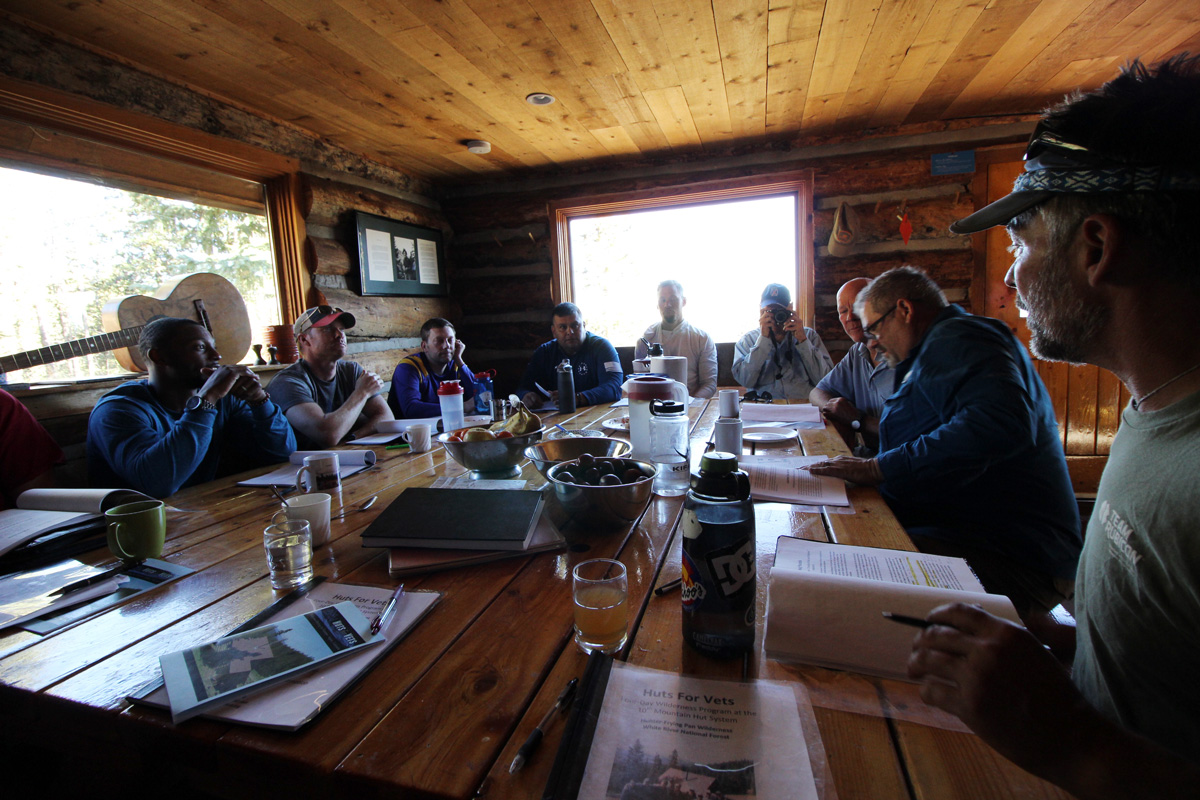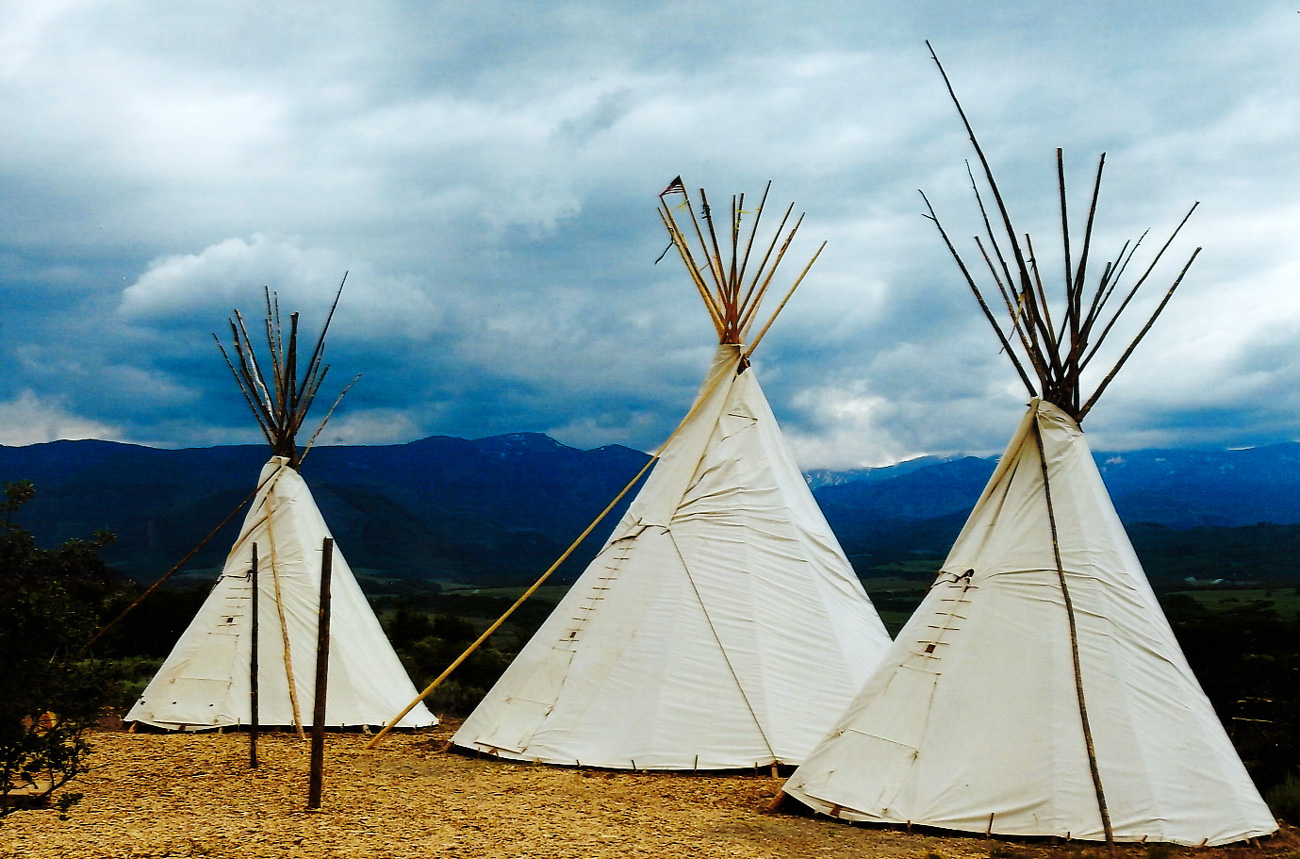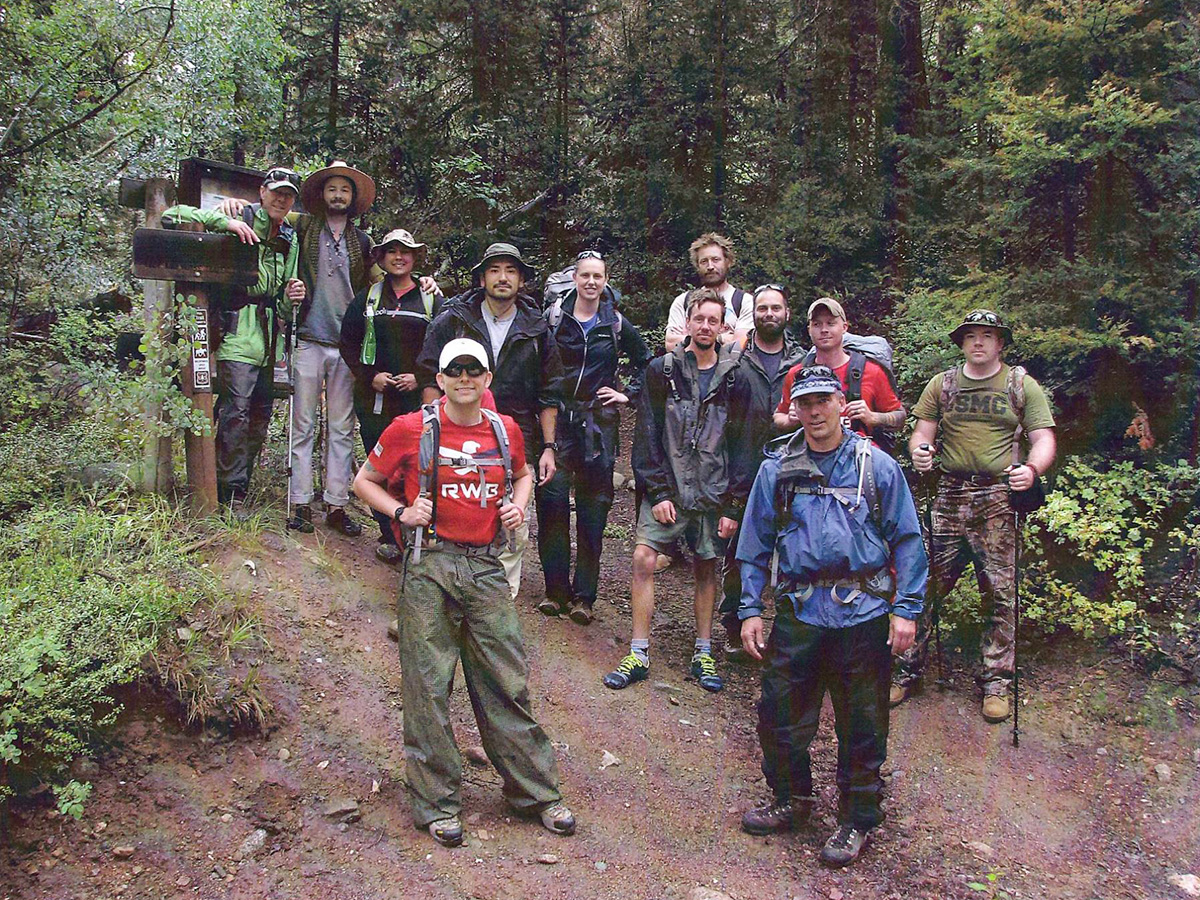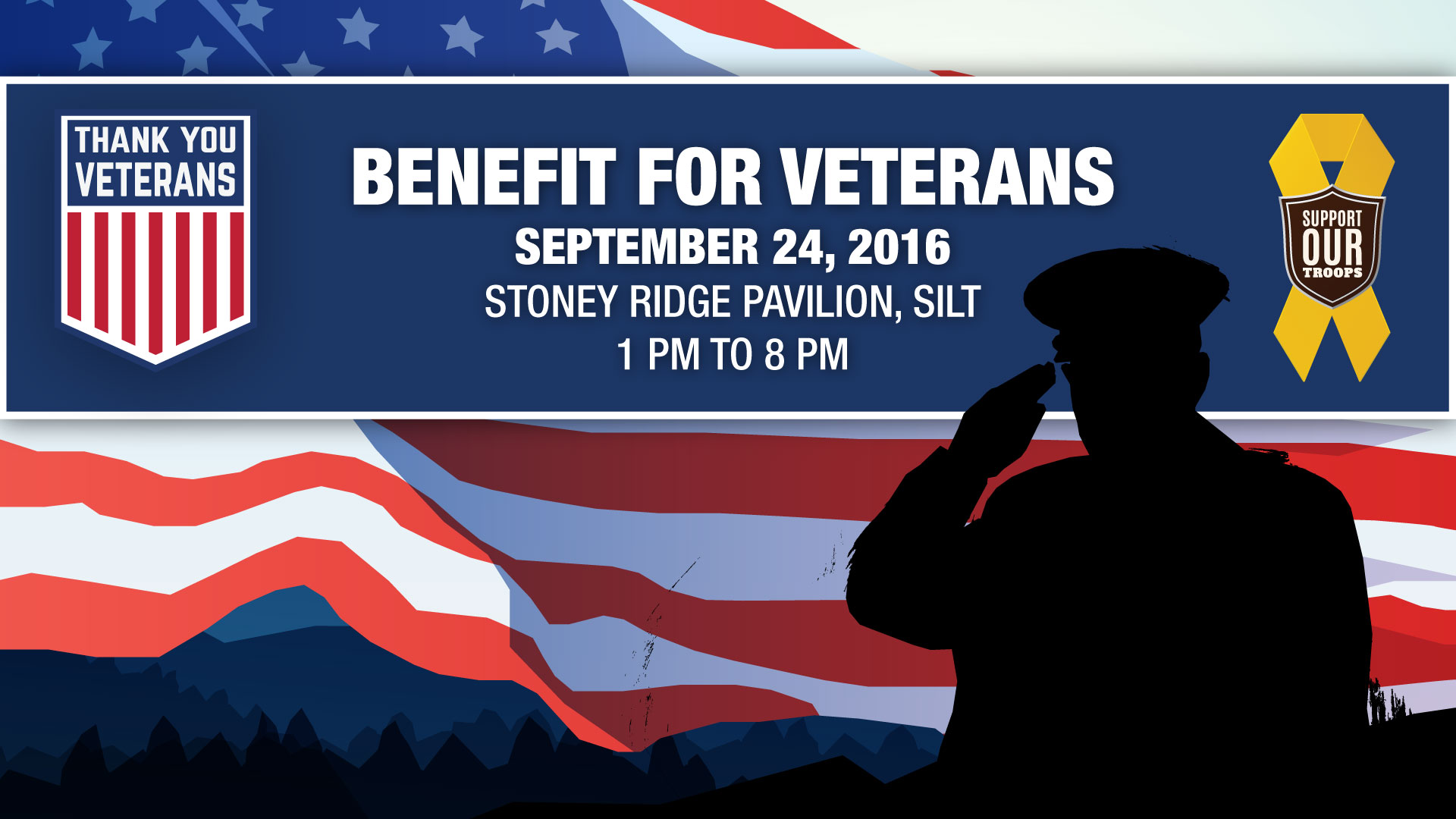What we’ve discovered in our six years of leading men and women veterans and active duty service members into the wilderness is that most participants are philosophers and deep thinkers. We believe this is because military service has exposed many to deep reflections of life, death, and the meaning of existence. The level of conversation is refreshing in a modern age where most people barely look up from their screens to acknowledge those around them.
Year-End Update for 2018
‘Huts For Vets’ Builds Tipi Base Camp and Targets National Veterans Groups
By Paul Andersen, Executive Director, Huts For Vets
Huts For Vets is now a landmark in the Roaring Fork Valley on a spectacular site with three large tipis overlooking the Elk Range. This prime piece of rural ranch property is a long term loan by a generous local ranching family that has been a HFV supporter from the day we offered our first programs to veterans in 2013.
Lonely War
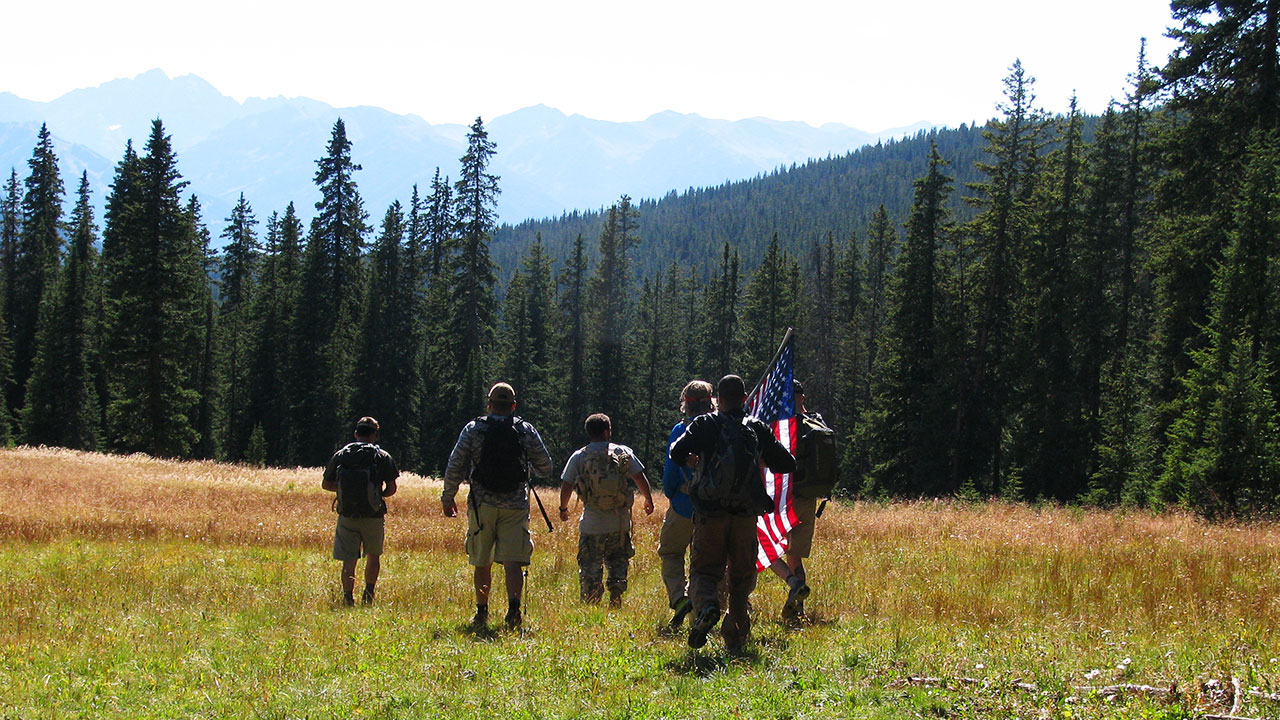
By Brian Porter, Huts For Vets, Director of Operations | Song performed by Mack Bailey
I have used writing as a form of therapy for years now. Mostly it revolves around my experiences with war and I hope to learn from what I do write to better myself. Two years ago, I finally visited a friend I had served with in the Marine Corps. We had remained in touch for 20 + years but had not seen one another in that time. After our visit, I thought about how long it had been since we had seen each other, how great it was to spend time with someone that would, and has, put their life in danger so that you could live your life. I started thinking about just before we went to battle, the promises we made to one another, “If I don’t make it, please live your life for me.” I had made that promise, now, I sometimes find it hard to keep.
Bringing Philosophy to Veterans in the Colorado Wilderness
Lightning flashed, thunder crashed, and rain drummed on the roof of Margy’s Hut in August 2016 as Aspen Institute senior moderator Pete Thigpen led a dozen US men and women combat veterans through a discussion of “The Melian Dialogue,” by Thucydides.
Thigpen, a Marine Corps veteran from the 1960s, opened with a tutorial on how to lead a seminar. The seminar approach is used by Huts For Vets to introduce veterans to philosophical discussions conducted amid towering mountain peaks and plunging timbered valleys in the Hunter-Frying Pan Wilderness.
Where War Lives
Dick Durrance was raised in Aspen, worked for decades as a professional photographer, and is reopening his photo files on images he shot as a military photographer during the War in Vietnam. The three images here represent the close intensity with which Durrance chronicled the war and the soldier who fought in it. His book, “Where War Lives,” is a testament to his art and reveals the real deal as he saw it on many fronts during the war. Durrance’s slide show from this period is riveting, and he is open to taking it on the road to veterans groups, schools, communities and to anyone who can appreciate the impact his images contain. To reach him, email dick@dickdurrance.com or connect through Huts For Vets.
How a Veteran Survives Survival
How a Veteran Survives Survival
By Paul Andersen, Founder and Exec. Dir. Huts For Vets
(from his Aspen Times newspaper column Monday August 29, 2016)
Most US soldiers today don’t die as casualties during war; they die afterwards, as veterans, from despair, helplessness and alienation.
Navigating their way back into the civilian world is a perilous journey. The mythical Odysseus described this well in his ten-year journey home from the killing fields of Troy.
Sebastian Junger writes: “The American military now has the highest PTSD rate in its history… American combat deaths have dropped steadily while trauma and disability claims have continued to rise… Today’s vets claim three times the number of disabilities that Vietnam vets did.”
Junger knows what he’s talking about given his own recovery from covering a war zone in Afghanistan, where he came under fire. “The inevitable counter attack started with an hour-long rocket barrage. All we could do was curl up in our trenches and hope. I felt deranged for days afterwards, as if I’d lived through the end of the world.”
You’re a Grand Old Flag
You’re a grand old flag
By Paul Andersen, Founder and Exec. Dir. Huts For Vets
(From his Aspen Times newspaper column Monday September 12, 2016)
The American flag was presented to me last week by a team of combat veterans. I had never looked at the symbol of our nation the way I did then.
The presentation was made during the final Huts For Vets trip of our busiest summer yet, where we took over 50 veterans into the wilderness for healing opportunities at the 10th Mountain Huts of Aspen.
“Huts For Vets has truly changed my life and is making me a better father, husband and leader in my community,” said Mike Greenwood, an Iraq War veteran of the Tenth Mountain Division, who handed me the neatly folded flag.
Huts for Vets Speak on KMTS for Silt Veterans Benefit
Listen as the Lt Col. Dick Merritt, U.S. Marine Corps (Ret) and the Western Slope Veterans Coalition speak about the upcoming fundraiser for Veterans in Silt. Enjoy food, live music, and our nation’s finest on September 24th in Silt. For complete details visit our Facebook Event page here.
Vets for Vets on Grass Roots Community Network
Originally posted on Grass Roots TV:
The Aspen Historical Society in association with the Library of Congress presents: Roaring Fork Veterans’ History Project – “Vets For Vets” with LtCol Dick Merritt, Brian Porter, Dr Gerald Alpern, and Paul Andersen
For more information on Vets for Vets click here.
Women in the Military
Women in the Military
A Perspective from Vietnam
By Lt. Col. Janis Nark, Huts For Vets
The first military women to arrive in Vietnam were nurses. It was 1956. As the American presence in Southeast Asia grew, so too did the number of young women who served. In all, nearly 8,000 military women, and thousands more who served in the civilian sector, were there.
About 83% of us were nurses. The rest held positions in special services, supply, air traffic control, cartography, the USO, American Red Cross and many other jobs in support of our combat troops.
We were all fairly young when we volunteered to serve our country, and many of us were woefully naïve in believing our recruiters’ promises; mainly that we could be stationed anywhere in the world that we wanted, and that Vietnam was “strictly voluntary.”

